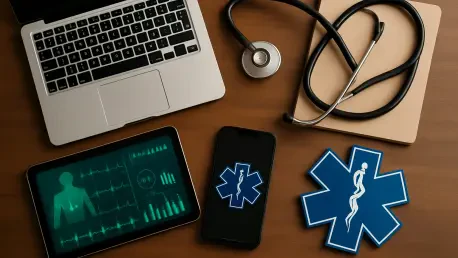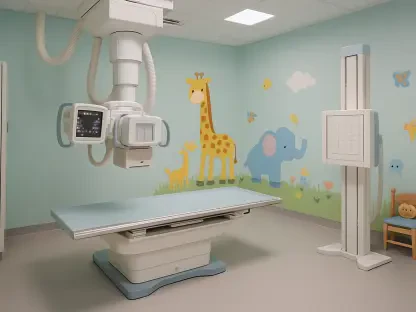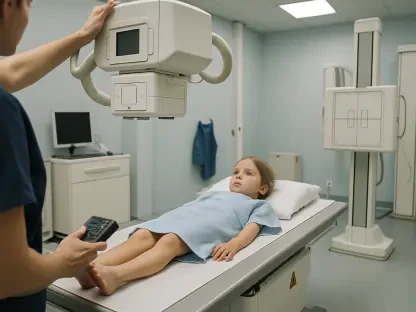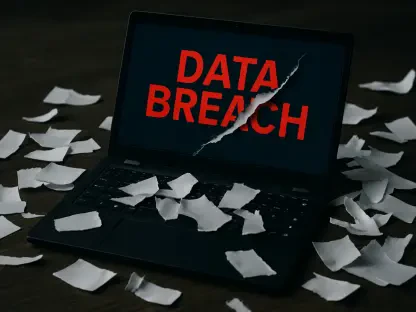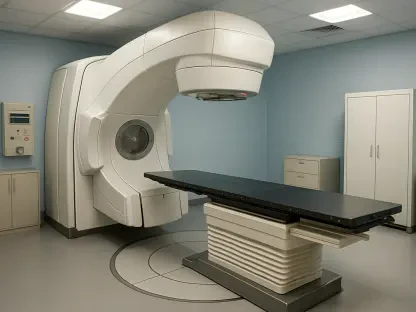In a groundbreaking stride toward better emergency care, hospitals and emergency medical services (EMS) along Utah’s Wasatch Front have embraced a transformative approach to patient treatment through data sharing, redefining how critical information flows between field responders and medical facilities. This innovative collaboration, spearheaded by a partnership between a prominent healthcare system and a leading provider of patient registry software, ensures that EMS teams and hospital staff have access to real-time patient data. By bridging long-standing communication gaps, this initiative paves the way for more informed decisions and improved outcomes. The implications of this development resonate not only in Salt Lake, Davis, and Utah counties but also as a potential model for nationwide healthcare integration. As technology continues to reshape emergency response, the focus on seamless data exchange highlights a pivotal shift toward enhancing the quality of care in high-stakes situations.
Revolutionizing Emergency Response with Real-Time Data
The cornerstone of this initiative lies in the ability to share vital patient information instantly between EMS providers and hospitals. Through a sophisticated health data exchange platform, EMS teams can now tap into longitudinal health records, including lab results, imaging, vital signs, and detailed procedure notes, directly within their electronic patient care record (ePCR) systems. This access transcends the barriers of differing technologies, ensuring that critical data is available right at the point of care. For hospital staff, the integration of ePCR data into electronic health record (EHR) systems creates a continuous flow of information, allowing for a comprehensive view of a patient’s condition from the moment of emergency response. Such immediacy in data availability empowers field providers to make swift, evidence-based decisions, ultimately enhancing the chances of positive patient outcomes during critical moments.
Beyond immediate care, the bidirectional data exchange offers a deeper layer of insight by incorporating post-hospital outcome information. Hospitals share detailed feedback with EMS agencies, shedding light on patient progress after initial treatment, including factors like social determinants of health that might influence recovery. This enriched context enables EMS providers to tailor their approaches to individual needs, even in the chaos of an emergency. Unlike traditional systems where such feedback was delayed or inaccessible, this real-time sharing fosters a dynamic partnership between pre-hospital and hospital care teams. The result is a more cohesive strategy that prioritizes patient well-being from the first point of contact through to recovery, setting a new standard for emergency medical coordination in the region and demonstrating the profound impact of integrated data systems.
Enhancing Training and Quality Standards for EMS Providers
One of the most significant benefits of this data-sharing initiative is its impact on EMS training and performance evaluation. In the past, obtaining hospital outcome data could take weeks or even months, leaving EMS providers with limited feedback on their interventions. Now, with outcome information available within hours, agencies can quickly assess the effectiveness of their actions in the field. Representatives from local EMS organizations have noted that this rapid feedback loop is a game-changer, allowing teams to refine their skills and adapt protocols based on real-world results. The ability to analyze specific cases and identify areas for improvement ensures that training programs are grounded in actual patient experiences, elevating the overall standard of care delivered during emergencies across Utah’s diverse communities.
Additionally, the integration of quality metrics tracking through shared data strengthens accountability and continuous improvement within EMS services. By aligning field practices with hospital outcomes, agencies can pinpoint trends, address gaps in care delivery, and implement targeted educational initiatives. This proactive approach not only boosts the confidence of EMS providers but also reassures the public that emergency services are evolving to meet modern healthcare demands. The collaboration underscores a commitment to excellence, as timely insights empower responders to stay ahead of challenges and deliver care that aligns with the latest medical advancements. As this model gains traction, it serves as a blueprint for other regions seeking to enhance their emergency response capabilities through data-driven strategies, ensuring that every intervention is informed by the most current and relevant information available.
Aligning with National Trends in Health Data Interoperability
This regional partnership reflects a broader national movement toward improved health data interoperability, aligning with frameworks like the Trusted Exchange Framework and Common Agreement (TEFCA). Such initiatives aim to standardize data sharing between EMS agencies and state health information systems, ensuring that providers everywhere have access to comprehensive patient information. Reports from the National Emergency Medical Services Information System (NEMSIS) highlight progress in states like Maine, where integration with statewide health information exchanges has significantly advanced emergency care coordination. Utah’s efforts mirror this trend, demonstrating how localized collaborations can contribute to a unified national strategy for better healthcare delivery through technology and shared resources.
Moreover, the emphasis on bidirectional data exchange underscores a growing consensus among healthcare leaders about the value of connected systems. Chief medical officers and field providers alike recognize that the more information shared between pre-hospital and hospital settings, the better equipped teams are to handle complex cases. While specific data volumes remain undisclosed for privacy reasons, the qualitative improvements in patient care standards are evident across the Wasatch Front. This alignment with national goals positions Utah as a leader in leveraging technology to bridge critical gaps, offering a glimpse into the future of emergency medical services where interoperability is not just an aspiration but a tangible reality driving better outcomes for patients in need.
Reflecting on a Milestone in Emergency Care
Looking back, the collaboration between Utah hospitals and EMS agencies marked a pivotal moment in the evolution of emergency medical care. The seamless exchange of real-time data transformed how decisions were made in the field, ensuring that every patient received tailored, informed treatment from the outset. The rapid feedback on hospital outcomes reshaped training and quality standards, equipping providers with the tools to continually improve. As this initiative aligned with national interoperability efforts, it set a precedent for other regions to follow. Moving forward, the focus should remain on expanding such systems, addressing potential challenges like data security, and ensuring scalability to rural areas. By investing in robust technological frameworks and fostering partnerships, the healthcare community can build on this success, creating a future where every emergency response is backed by the full spectrum of patient information for optimal care.
